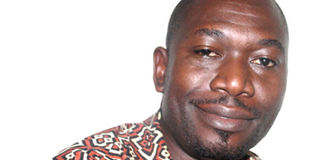Incorporate community museums in tulambule tourism campaign

On May 18, Uganda joined the rest of the world to commemorate the International Museums Day. The day is an occasion to raise awareness on how important museums are in regard to the development of society.
Every year, the International Council of Museums, organises a theme for museum events that last for a day, a weekend, a week or even a month. In recent years, the day has been experiencing its highest recognition with nearly 30,000 museums organising activities in more than 120 countries.
Uganda is slowly embracing the day. In the past two years, Uganda Museum along with community museums organised exhibitions, conferences and public debates to commemorate the day.
Unlike the Uganda Museum, community museums are still invisible and their role in promoting cultural tourism is largely unrecognised. Yet they serve to depict and preserve important aspects of cultural heritage of different ethnicities, including Baganda, Banyankore, Madi, Alur, Acholi, Karimojong, Basoga, Banyoro, Ethur, and Batooro, among others. They are both community and private initiatives, stemming from the passion of one or more Ugandans. While some of the museums have expanded in terms of structures and volume of objects, others are still small-scale initiatives.
The museums registered an association, the Uganda Community Museums Association, with the National NGO Registration Bureau. They have developed Quality Assurance Standards to ensure that all community museums adhere to certain quality standards that apply to all museums globally. Some of the museums have made efforts to engage young people by inviting students to their premises. In December 2016 and April 2017, community museums held exhibitions in Fort Portal and Iganga districts respectively.
Most of the community museums are located on the main tourism routes or circuits. For instance, on Kampala-Masaka-Mbarara-Kabale route, you will find Butambala Centre for Civilisation in Kyabadaza, Uganda Martyrs University Nkozi’s Anthropological Museum, Igongo Cultural Museum in Mbarara and the Great Lakes Museum in Ntungamo. In Rakai, District, St Lukes Community Museum and Kooki Cultural Museum can spice up a trip to Musambwa Island. In the Rwenzori sub-region, Koogere Foundation Museum in Fort Portal Town, Obudingiya bwa Baamba Museum in Bundibugyo Town and Bukangama Community Museum on Kilembe Road in Kasese will excite you anyone with their beautiful artifacts ranging from milk pots, music instruments and traditional dresses among other items.
Along Kampala –Jinja-Mbale-Karamoja route, one will be pleasantly welcomed by several museums including the Cultural Research Centre Museum in Jinja town, Kigulu Chiefdom Museum in Iganga, Mt Elgon History and Cultural Museum in Mbale Town, the Ik House of Memory in Kamion, Kaabong District near Kidepo Valley National Park. Ethur community Museum in Abim Town and the Museum of Acholi Art and Culture in Kitgum can also spice your trip to Kidepo Valley National Park. In West Nile, museums such as Ker Kwonga Chiefdom in Panyimur and Madi Community Museum in Moyo District have been established to boost tourism potential of the region.
There are some efforts being made to support the community museums in Uganda. The Uganda National Commission for UNESCO has recognised the role of community museums in the 2015 Museum Status report, the 2015 Museums and Monuments Policy provides for community and private museums and in 2016 the International Council of Museums published an article on community museums in Uganda, hence publicising community museums at international level.
I appeal to state minister for Tourism Godfrey Kiwanda to incorporate community museums in his Tulambule tourism campaign. It is important to recognise that our heritage and tourism go beyond the gorillas in Bwindi or the national parks.
[email protected]


